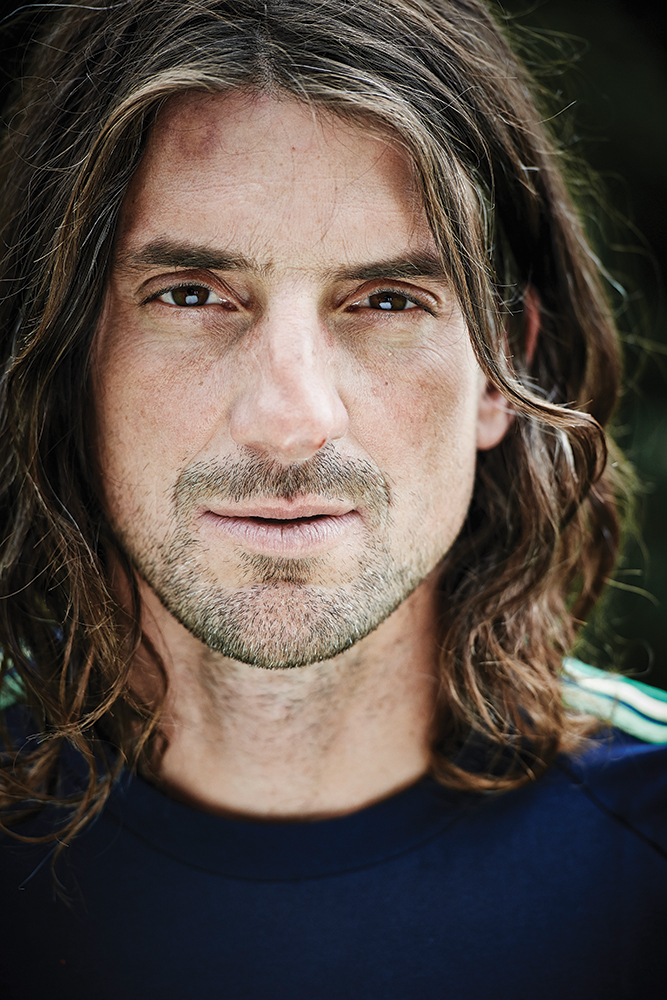Dean Potter, 1972–2015

Dean Potter is one of the few people in sports history to have pushed the limits in multiple, widely disparate disciplines. Yet he saw his pursuits as arts and not as sport—himself as an artist not an athlete. He was a climber before the gym era, drawn to climbing by a love of the outdoors and a pursuit of adventure. It wasn’t about the physical act, and certainly not about the ratings or any other metrics applied to climbing. It seemed to be an inward journey or, as he often described it, a journey toward his fears.
We shared many of the same experiences, but they seemed to originate from wildly different motivations. When Dean soloed he was right on the edge and seemed to thrive there. A video of Dean free soloing Heaven (5.12d in Yosemite Valley) strikingly reveals that raw emotion: barely contained fear, or maybe just intense focus, or who knows what, really, as he sits at the base preparing. And then uncontainable joy when he tops out. Only he knows what he experienced for the 16 or so moves he made up that wildly overhanging crack.
And that’s probably the essence of Dean: doing things that no one else considered possible, experiencing things that no one had before and may never again. Dean authored extremely difficult crack climbs across the Utah desert and highball boulder problems in the Valley like the Wizard, an insane-looking jump start that never really gets attempted because it’s just too daunting. At the same time he was doing some of the longest wing-suit flights in the world and walking outrageous highlines, sometimes free solo, sometimes with a BASE rig, but always in the most beautiful places.
This speaks toward his motivations: Dean was willing to take risks and pursue seemingly crazy goals because they were beautiful. He was the one who thought up the Moonwalk, an incredible short film by Reel Water Productions and Mikey Schaefer of Dean free soloing a highline on the summit of Cathedral Peak with an enormous full moon as his backdrop. The physical beauty of the places he performed inspired him to push further.
And yet he was also spurred by competition or a desire to be first—the same mundane things that motivate most people. He spoke often of trying to overcome his ego, yet it clearly was at play as he tried to break speed records or do first ascents. That competitive side seemed to come out a lot around Hans Florine, who he compared to an annoying dog humping his leg in the film Race for the Nose. They traded speed records on the Nose several times, and when Dean heard that Hans was aiming to be the first person to link up Half Dome and the Nose, he flew back to Yosemite and started the night before, so he could finish the enchainment first.
Dean was the first person to link the three biggest walls in Yosemite, and at various times held many of the most coveted speed records in the Valley. But his exploits in Patagonia make the Yosemite climbs look small, including soloing the Compressor Route on Cerro Torre and a new link-up on Fitz Roy in a single season. Last May, less than two weeks before his unfortunate death in a wing-suit flying accident in Yosemite, he set the car-to-car speed record for running up Half Dome. It’s worth remarking how impressive it is for a 43-year-old alpinist/ aerialist/highliner to set a trail-running record on an objective as high-profile as this.
Dean’s biggest contribution to his arts might be the way he helped to subtly rewrite what’s considered normal. Speed climbing, simul-climbing, daisy soloing, even the big Yosemite link-ups are now much more common, partially as a result of his influence. Movies like Masters of Stone 5 and Fly or Die exposed people to ways of climbing that would have seemed insane if they weren’t seeing them happen before their eyes.
Dean learned from the climbing community and owed a lot to those who came before him. And then he climbed toward his fears and changed the perception of what was possible.
— Alex Honnold
Moonwalk from Reel Water Productions on Vimeo.


